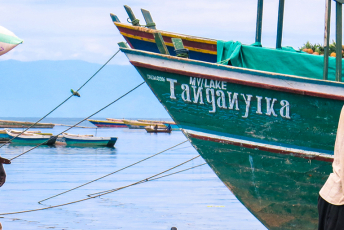Elephant poaching in Africa has dropped for five consecutive years to levels last witnessed over a decade ago. The latest report by the Convention on International Trade in Endangered Species of Wild Fauna and Flora (CITES) on the status of elephants and ivory trade reveals a welcome indication of gains made, and links this to better law enforcement.
The report, based on 2016 records, indicates that last year saw ‘the highest level of seizures of illegally traded ivory by weight since commercial international trade was banned by CITES in 1989.’
Another heartening development is the recent announcement by China, the largest importer of illegal ivory, that it would ban all domestic ivory trade and processing by the end of this year. This development could further assist in the growth of elephant populations in Africa. Experts warn, however, that such progress risks being derailed by new ivory markets in Laos and other Asian countries, and that the threat to Africa’s wildlife from transnational organised crime remains a real issue.
‘There has been a steady decline in poaching levels since its peak in 2011, and the analysis from 2016 concludes that overall poaching trends have now dropped to pre-2008 levels,’ says CITES Secretary General, John Scanlon. The elephant poaching trends that Scanlon alludes to are primarily linked to Eastern Africa.
This region saw a dramatic surge in poaching that began in 2008, and decimated almost 50% of its elephant population. Between 2010 and 2012, poachers killed more than 100 000 elephants. This led to Eastern African countries requesting special protection status for the elephant.
The CITES figures are regarded as the most reliable data available. Frequently cited by the conservation community, these statistics are generated by two key programmes: Monitoring the Illegal Killing of Elephants (MIKE) and the Elephant Trade Information System (ETIS). The findings of these programmes are based on unique, primary information on the illegal killing of elephants. This data is collected by ranger patrols in over 60 MIKE sites across Africa and complements government-reported ivory seizures.
Seizure data is, however, problematic due to the covert nature of illegal ivory trade. Not all illegal ivory transactions within a country are detected, and there is no accurate way of determining what proportion of illegal ivory is seized. Additionally, some seizures by law enforcement go unreported. Nonetheless, existing data on illegal ivory seizures point to trends and reveal underlying dynamics of the illegal ivory trade.
In Southern Africa, the CITES report indicates that the jumbo population is stable or increasing. This could be interpreted as a marker of success by those who motivated for once-off ivory sales. In 2008, Botswana, Namibia, South Africa and Zimbabwe earned US$15.4 million through a 102-tonne ivory sale to Chinese and Japanese traders in CITES-supervised auctions. The proceeds, according to the four countries, were used in conversation efforts. Research, however, shows that the once-off sales led to higher demand and worryingly provided cover for ivory smugglers.
Calls for the lifting the almost three-decade-old CITES ivory ban continue to be heard. These come despite economic arguments that show how the legal trade in ivory does not serve to lower poaching rates. Evolving demand in Southern Asian markets could also affect the stability and projected rise of Southern Africa’s elephant population.
The MIKE report of 2013 indicated a spike in elephant poaching across Africa in 2011, three years after the approval of the once-off ivory sales. This confirmed fears that the sales would raise ivory demand in China and Japan, where most of the auctioned ivory was purchased. In turn, this increased demand led to the slaughter of tens of thousands of elephants, rhinos and tigers in Africa and Asia. The period between 2016 and 2017 saw a spike in ivory processing in Africa that fed the smuggling of finished products into Asia.
Governments in both Africa and Asia have been adopting CITES measures in an attempt to curb the illegal poaching of elephants and illicit trade in ivory.
The record numbers of large-scale ivory seizures reported in 2016 are attributed to stricter law enforcement measures, which led to the closure of domestic legal markets and a drop in ivory prices, especially in China.
Additionally, although China closed its domestic ivory market, this has driven demand for tusks, horns and skins to neighbouring Laos, Thailand and Vietnam. Law enforcement against ivory trade in these countries remains weak, creating gaps for ivory that originate from areas controlled by terrorist groups, like Somalia’s al-Shabaab and Uganda’s Lord’s Resistance Army.
The further expansion of these markets could be another development that reverses the trends of reduced poaching and increased stability in elephant populations. Strengthened efforts are needed to bolster law enforcement in African countries and to compel Southern Asian governments to respect international conventions like CITES.
Deo Gumba, ENACT Regional organised crime observatory coordinator – East Africa







